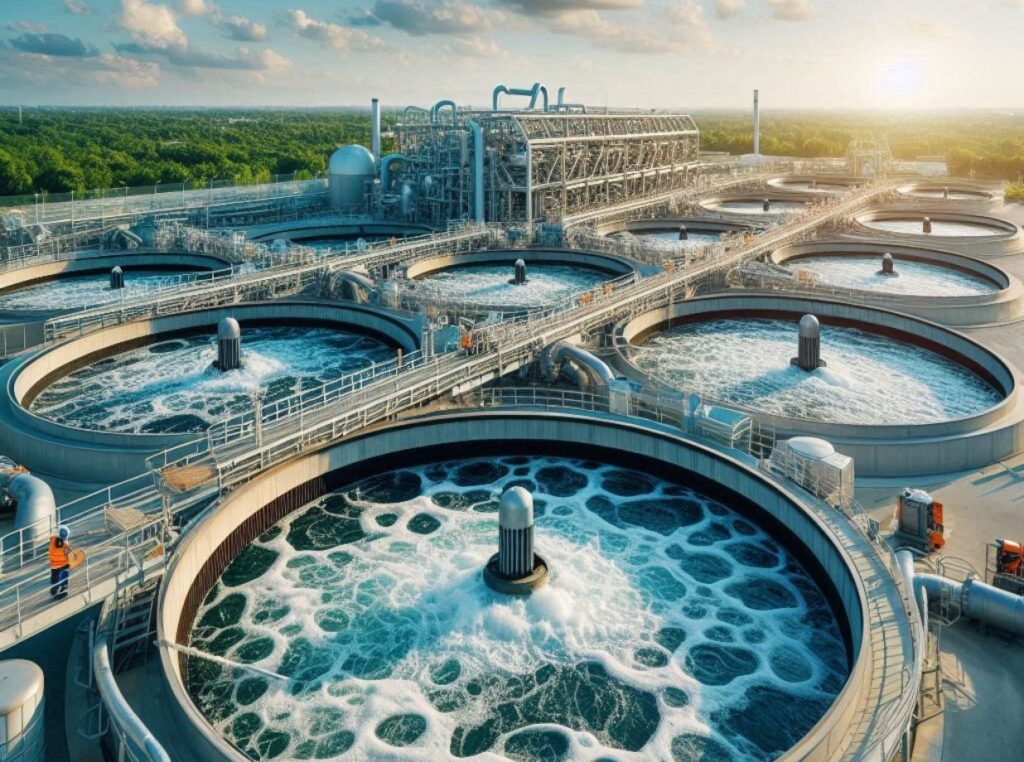Wastewater discharge has significant impacts on aquatic ecosystems, affecting the water quality, biodiversity, and overall ecological balance. When untreated or poorly treated wastewater is released into water bodies, it introduces a variety of pollutants such as nutrients, pathogens, heavy metals, and organic compounds. These pollutants can lead to eutrophication, a process where excessive nutrients cause algal blooms, deplete oxygen levels, and ultimately harm aquatic organisms.
Additionally, the presence of pathogens in wastewater can pose serious health risks to both aquatic life and humans who rely on these water bodies for various purposes. Furthermore, the temperature of wastewater discharged from industrial processes or power plants can disrupt the natural thermal balance of aquatic ecosystems, impacting the behavior and survival of aquatic organisms. The accumulation of heavy metals and organic compounds in sediments can also have long-term effects on the health of aquatic organisms and the overall functioning of the ecosystem.
Overall, the impact of wastewater discharge on aquatic ecosystems underscores the need for effective management and treatment of wastewater to minimize ecological harm.
Key Takeaways
- Wastewater discharge has significant ecological effects on aquatic ecosystems, particularly in coastal areas.
- Understanding the journey of wastewater from its source to the sea is crucial in addressing and mitigating its impact on marine life.
- Wastewater treatment plays a vital role in protecting waterways and safeguarding water quality from source to sea.
- Monitoring and mitigating the effects of wastewater on marine life is essential for the preservation of aquatic ecosystems.
- Public awareness and action, as well as collaborative efforts, are important in addressing and preventing wastewater pollution and safeguarding water quality from its source to the sea.
Understanding the Journey of Wastewater from Source to Sea
The journey of wastewater from its source to the sea is a complex and interconnected process that involves various stages and pathways. Wastewater originates from a multitude of sources including domestic households, industrial facilities, agricultural activities, and stormwater runoff. Once generated, it enters the sewer systems or treatment plants where it undergoes primary, secondary, and tertiary treatment processes to remove contaminants and pollutants.
After treatment, the effluent is often discharged into receiving water bodies such as rivers, lakes, or coastal areas. During this journey, the wastewater can transport a myriad of pollutants and contaminants, impacting the water quality and ecological integrity of the receiving environments. In addition to direct discharge, wastewater can also infiltrate into groundwater systems, further spreading its impact across different ecological compartments.
Understanding the pathways and dynamics of wastewater from its source to the sea is crucial for developing effective management strategies and mitigating its ecological effects.
The Role of Wastewater Treatment in Protecting Waterways
Wastewater treatment plays a pivotal role in protecting waterways from the adverse effects of pollution and contamination. Through a series of physical, chemical, and biological processes, wastewater treatment plants aim to remove or reduce pollutants such as suspended solids, organic matter, nutrients, pathogens, and toxic substances from the wastewater. More information on the impact of water treatment on environmental sustainability can be found here.
Primary treatment involves the removal of large solids through sedimentation, while secondary treatment utilizes biological processes to break down organic matter and remove nutrients.
Advanced treatment methods such as tertiary treatment or additional disinfection processes further improve the quality of treated effluent before its discharge into water bodies.
By effectively treating wastewater, these facilities help prevent the degradation of water quality, minimize ecological impacts on aquatic ecosystems, and safeguard public health. Moreover, advancements in wastewater treatment technologies continue to enhance the efficiency and sustainability of treatment processes, contributing to the overall protection of waterways from pollution.

Ecological Consequences of Wastewater Discharge in Coastal Areas
| Metrics | Data |
| Impact on Marine Life | Decreased oxygen levels, disruption of food chains, and habitat destruction |
| Water Quality | Elevated levels of nutrients, heavy metals, and pathogens |
| Human Health Risks | Exposure to contaminants through consumption of contaminated seafood or direct contact with polluted water |
| Ecosystem Disturbance | Loss of biodiversity, changes in species composition, and altered ecosystem functioning |
Wastewater discharge in coastal areas can have profound ecological consequences due to the unique characteristics and sensitivity of these environments.
Coastal ecosystems are often rich in biodiversity and provide essential habitats for various marine species.
When untreated or inadequately treated wastewater is discharged into coastal waters, it can lead to nutrient enrichment, algal blooms, oxygen depletion, and habitat degradation.
The accumulation of pollutants in sediments and water columns can disrupt the balance of coastal ecosystems, impacting the health of marine organisms and diminishing overall ecological resilience. Additionally, coastal areas are frequently utilized for recreational activities such as swimming, fishing, and tourism, making them susceptible to the negative impacts of wastewater pollution on human health and well-being. Given these ecological consequences, it is imperative to implement stringent regulations and management practices to minimize the ecological footprint of wastewater discharge in coastal areas.
Monitoring and Mitigating the Effects of Wastewater on Marine Life
Monitoring and mitigating the effects of wastewater on marine life are essential components of effective environmental management strategies. Through comprehensive monitoring programs, scientists and environmental agencies can assess the water quality, biological integrity, and ecological health of marine ecosystems in relation to wastewater discharge. This involves regular sampling and analysis of water and sediment quality, as well as the monitoring of key indicator species to gauge the impacts on marine life.
Furthermore, mitigation measures such as implementing advanced treatment technologies, establishing marine protected areas, and promoting sustainable wastewater management practices can help reduce the ecological effects of wastewater discharge on marine life. By integrating scientific research with proactive measures, it is possible to minimize the impact of wastewater on marine ecosystems and support the conservation of marine biodiversity.
The Importance of Public Awareness and Action in Addressing Wastewater Pollution
Public awareness and action play a crucial role in addressing wastewater pollution and promoting sustainable water management practices. Educating communities about the sources and impacts of wastewater pollution can foster a sense of environmental responsibility and encourage individuals to adopt water-saving behaviors and proper disposal practices. Additionally, public engagement can support initiatives aimed at improving wastewater infrastructure, enhancing treatment capabilities, and implementing pollution prevention measures.
By empowering individuals to take an active role in protecting water resources, public awareness campaigns can contribute to reducing the volume of pollutants entering water bodies and ultimately mitigating the ecological effects of wastewater discharge. Furthermore, public support for policies that prioritize water quality protection can influence decision-makers to allocate resources towards sustainable wastewater management practices.
Collaborative Efforts to Safeguard Water Quality from Source to Sea
Safeguarding water quality from source to sea requires collaborative efforts among various stakeholders including government agencies, industries, environmental organizations, research institutions, and local communities. By fostering partnerships and collaboration, it is possible to develop integrated approaches for managing wastewater discharge and protecting aquatic ecosystems throughout their entire journey. These collaborative efforts may involve establishing regulatory frameworks for wastewater management, promoting technological innovation in treatment processes, conducting research on ecological impacts, and engaging in public outreach initiatives.
Furthermore, international cooperation is essential for addressing transboundary water pollution issues and ensuring the sustainable management of shared water resources. In conclusion, understanding the ecological effects of wastewater discharge from source to sea is essential for implementing effective strategies to protect waterways and marine ecosystems. By recognizing the interconnected nature of this issue and engaging in collaborative actions at local, regional, and global levels, it is possible to mitigate the ecological consequences of wastewater discharge and promote the sustainable use of water resources for future generations.
FAQs
What is wastewater discharge?
Wastewater discharge refers to the release of used water from households, industries, and other sources into the environment. This water contains a variety of contaminants, including chemicals, nutrients, and pathogens, which can have negative effects on aquatic ecosystems.
How does wastewater discharge impact aquatic ecosystems?
Wastewater discharge can lead to a range of ecological consequences in aquatic ecosystems, including nutrient enrichment, oxygen depletion, and the introduction of harmful chemicals and pathogens. These impacts can disrupt the balance of the ecosystem and harm the plants, animals, and microorganisms that depend on clean water to survive.
What is the journey of wastewater from source to sea?
The journey of wastewater from its source to the sea involves a series of steps, including collection, transportation, treatment, and discharge. Wastewater is collected from homes, businesses, and industries, transported to treatment facilities, where it undergoes various processes to remove contaminants, and then discharged into waterways or the sea.
What is the role of wastewater treatment in protecting waterways?
Wastewater treatment plays a crucial role in protecting waterways by removing contaminants from wastewater before it is discharged into the environment. Treatment processes such as filtration, biological treatment, and disinfection help to reduce the harmful effects of wastewater discharge on aquatic ecosystems.
What are the ecological consequences of wastewater discharge in coastal areas?
Wastewater discharge in coastal areas can lead to eutrophication, harmful algal blooms, and the degradation of coral reefs and other sensitive habitats. These ecological consequences can have far-reaching impacts on marine life and the overall health of coastal ecosystems.
How can the effects of wastewater on marine life be monitored and mitigated?
The effects of wastewater on marine life can be monitored through water quality testing, biological surveys, and ecological assessments. To mitigate these effects, measures such as improved wastewater treatment, pollution prevention, and habitat restoration can be implemented.
Why is public awareness and action important in addressing wastewater pollution?
Public awareness and action are important in addressing wastewater pollution because individuals and communities play a key role in reducing the amount of contaminants that enter the wastewater system. By practicing water conservation, proper disposal of household chemicals, and supporting policies and initiatives that protect water quality, the public can help minimize the impact of wastewater pollution.
What are collaborative efforts to safeguard water quality from source to sea?
Collaborative efforts to safeguard water quality from source to sea involve partnerships between government agencies, non-profit organizations, businesses, and local communities. These efforts may include the development of watershed management plans, pollution prevention programs, and public outreach campaigns aimed at promoting sustainable water use and protecting aquatic ecosystems.
